

August 1845 |
||
|
St. Catharines becomes a town and passes Bylaw 15, which provides "pound-keepers and constables." These were individuals who made themselves available when the town required. The bylaw provided a fee structure for bailiffs and police officers of that time:
This new "police force" -- largely made up of citizen volunteers -- was administered by a police board made up of five members, who also served as the St. Catharines town council. The police board's membership consisted of Henry Mittleberger, James Benson, E.E. Stephenson, George Rykert, and A.S. St. John. |
||
1850 |
||
|
Adam Montgomery in his late years. This picture provided to the former St. Catharines Police by Mrs. George Montgomery. The Legislature of Upper Canada passes regulations dealing with the conduct of policing. Mayors and the councils of townships and cities become responsible for law enforcement. The decisions of the Legislature of Upper Canada spark local changes in policing. Adam Montgomery becomes the first Chief Constable of St. Catharines. |
||
1856 |
||
| St. Catharines has its first full-time police officers. Three constables are hired -- one for each ward of the town. J. Devlin, S. Smith, and J. Graham are paid the equivalent of a dollar a day for their police duties, which included nightly patrols of their ward. | ||
1872 |
||
| Chief John Cummings -- a professional law enforcement officer who worked in England and Scotland before coming to Canada -- replaces Adam Montgomery as Chief Constable. | ||
1876 |
||
| St. Catharines becomes a city. Its police force consists of a Chief, two Sergeants, and 10 Constables. They are under the control of a three member commission, consisting of Major Calvin Brown, Judge John Lawder, and Magistrate Thomas Burns. | ||
1885 |
||
| A new Chief, Edward Parnell, begins downsizing the police force. Because the economy has hit a slump, the department slowly begins cutting back on the number of officers. By 1892, the police have an annual budget of $5661.68, and have minimized manpower ... it consists of the Chief and five Constables. | ||
1909 |
||
| Harry Greene takes over as Chief when Edward Parnell retires, and begins hiring constables. It grows to a force of nine men. Also in this year, the St. Catharines Police are issued guns for the first time. | ||
1912 |
||
| The St. Catharines Police are issued their first patrol vehicles ... two bicycles. | ||
1919 |
||
| Niagara Falls forms an organized police force, which has its own police car. | ||
1924 |
||
| The St. Catharines Police are issued their first patrol cars. | ||
1937 |
||
| St. Catharines moves its police department into the new city hall. Up until this point, the police and city's offices had done its work out of a converted stable. | ||
1963 |
||
| St. Catharines Police move out of city hall and into their headquarters on Church Street in St. Catharines. | ||
1964 |
||
| September 13, 1964 - Dorothy Hart becomes the first police woman in the Niagara Region, when she begins her policing career with the Grimsby Police Service. Dorothy would eventually retire from the Niagara Regional Police Service in April, 1995. | ||
1970 |
||
In January of 1970, the Niagara Regional Board of Commissioners of Police is officially established to initiate the changeover of municipal police forces into a regional police force. The Commissioners select three officers from the twelve area police forces to help them organize the new Regional Force. Chosen were St. Catharines Deputy Chief James Gayder, Niagara Falls Deputy Chief Donald Harris, and Welland Deputy Chief Martin "Bud" Walsh. Working with the new Commission, these Officers set up the Force structure, including the Divisions and Detachments and their boundaries, as well as such important facilities as Communications. |
||
1971 |
||
|
Officers undergo winter driver training in one of the early patrol cars The regional government of Niagara is formed. All former municipal police forces within the new Regional Municipality of Niagara are incorporated into the Niagara Regional Police Force. This name is later changed to the "Niagara Regional Police Service." The headquarters of the Regional Police is the building that served as the St. Catharines Police Force's headquarters. The joining of the various police forces makes the Niagara Regional Police Service one of the ten largest police service's in Ontario. At this time, it consisted of 398 Officers and 42 civilian employees. |
||
January 1st, 1971 - May 31st, 1977 |
||
| Albert E. Shennan serves as the first Police Chief of the Niagara Regional Police Service | ||
1974 |
||
| Welland Division moves into a newly renovated building | ||
1976 |
||
| Niagara Falls Division moves into a new facility | ||
May 31st, 1977 - December 31st, 1983 |
||
| Donald Harris serves as the second Police Chief of the Niagara Regional Police Service | ||
1977 |
||
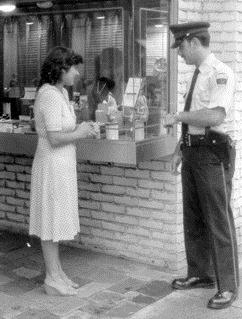
Then Cst. Carl Scott walks the beat. On October 1st, 1977, the Niagara Regional Police Force (as it was then called) takes over policing of the entire Niagara Region. Before this, a number of municipalities that were not protected by the NRPS received police protection from the Ontario Provincial Police |
||
1978 |
||
| Grimsby Detachment moves into a new facility. | ||
1980 |
||
| Fort Erie Detachment moves into its new facility. This year also marks the inception of the Polygraph Unit. The unit is established when the first constable with the Niagara Regional Police Service attends the Canadian Police College's Polygraph School, and is certified as a forensic polygraphist. | ||
1983 |
||
| Ground is broken to begin an addition to St. Catharines Headquarters. | ||
January 1st, 1984 - March 4th, 1987 |
||
| James A. Gayder serves as the third Police Chief of the Niagara Regional Police Service | ||
1984 |
||
| Planning Research Unit is established. | ||
1986 |
||
| Port Colborne Detachment moves into a new facility. In November of 1986, the Sexual Assault Unit is implemented. This unit is responsible for investigating sexual assault cases anywhere within the Niagara Region. | ||
August 31st, 1987 - March 1st, 1993 |
||
| John E. Shoveller serves as the fourth Police Chief of the Niagara Regional Police Service. | ||
1988 |
||
| January 1st, 1988 is the inception date of O.R.A.C.L.E. ("On-Line Records Access Computer for Law Enforcement"). This computerization of various operational and administrative files provides for more accurate and timely information. | ||
1989 |
||
| On April 27th, 1989, the Regional Municipality of Niagara's 911 Emergency Telephone service commences operation. This system has been enhanced to provide the features known as A.N.I. (Automatic Number Identification) and A.L.I. (Automatic Location Identification). It is designated as E.9.1.1. Also, in December of this year, 100 Mobile Data Terminal (MDT) System Units using Custom Terminals and Midland radios are installed in patrol unit cars. Officers who are dispatched to answer calls for service receive information about the location to which they are responding before they arrive there. Officers also have the capability to query local, Provincial and Federal databases. The MDT system provides the Service with a secure, accurate and speedy means of communication that had not been available with the voice radio system. The MDT provides a technological advantage to the Patrol Officer. These terminals when on-line February, 1991. | ||
1991 |
||
| The Niagara Regional Police Service becomes involved with the Violent Crime Linkage Analysis System (ViCLAS). This is a national database for tracking violent offenders and the offenses they commit. The Royal Canadian Mounted Police (RCMP) in co-operation with other Police Services developed this system. | ||
1992 |
||
| In February, 1992, the Child Abuse Unit is implemented. It is responsible for investigating all incidents of child sexual abuse or child physical abuse occurring in the Niagara Region. | ||
March 1st, 1993 - 2000 |
||
| J. Grant Waddell serves as the fifth Police Chief of the Niagara Regional Police Service. | ||
1993 |
||
| The Major Crime Unit is established. Its mandate is to investigate such serious offences as serial auto theft, robberies of financial institutions, complex fraud cases, and murders. Due to the inception of other specialized units, the Major Crime Unit is now tasked with solely being responsible for the investigation of murders and suspicious deaths. | ||
1994 |
||
| Welland Division's building officially opens. Also this year, on November 22, 1994, the Niagara Regional Police Service sets up its Internet site. The NRPS Web site (www.nrps.com) goes live on February 2, 1995. This makes the Niagara Regional Police Service the first police service in Canada on the World Wide Web. | ||
1995 |
||
| ViCLAS (Violent Crimes Linkage Analysis System) becomes part of the Ontario Provincial Police's Behavioural Science Section, and the Niagara Regional Police Service begins submitting information to them on a voluntary basis. | ||
1996 |
||
|
Due to casino gambling being introduced to the Niagara Falls area, the Casino Patrol Unit is formed in December of 1996. It is responsible for policing the hub of the city's tourist district, where the casino and numerous other attractions are located.
Official Crest of the Niagara Regional Police Service The Niagara Regional Police Service receives a new crest as part its 25th Anniversary celebrations. For more information about the crest, visit our Web page explaining The Meaning of Our Crest. |
||
1997 |
||
| On April 7, 1997, the Niagara Regional Police Service's ViCLAS Unit becomes operational. This unit works with RCMP's ViCLAS as part of an automated case linkage system designed to capture, collate and compare crimes of violence through the analysis of victimology, offender/suspect description, modus operandi, forensic and behavioural data. | ||
August 11, 2000 - January 1, 2005 |
||
| Gary E. Nicholls serves as the sixth Police Chief of the Niagara Regional Police Service. | ||
2004 |
||
| A new police facility at 2 Cushman Road in St. Catharines opens. The building houses numerous emergency service units, including Traffic Services. | ||
January 1, 2005 - March 2012 |
||
| Wendy E. Southall served as the seventh Police Chief of the Niagara Regional Police Service. | ||
December 4, 2005 |
||
|
The Niagara Regional Police Service implements a new Computer Aided Dispatch (CAD) system to replace their existing one, which had been in use since 1988. The administrative boundaries made up of divisions are also changed during this period to districts. 11 Division (St. Catharines) becomes 1 District, 22 Division (Niagara Falls) becomes 2 District, 33 Division (Welland) becomes 3 District, 23 Division (Fort Erie) becomes 5 District, 32 Division (Port Colborne) become 6 District, and 14 Division (Grimsby) becomes 8 District. |
||
2010 |
||
| In September, Grimsby District #8 officially opens. In December, CopLogic is introduced, allowing the public to file reports for specific "non-emergency" incidents online. | ||
June 18, 2012 - July 15,2017 |
||
| Jeffrey McGuire served as the eighth Police Chief of the Niagara Regional Police Service. | ||
2012 |
||
| In July, Fort Erie District #5 officially opens. | ||
2016 |
||
| In September of 2016 the Niagara Regional Police Service moved it's Headquarters from 110 James Street in St. Catharines to 5700 Valley Way in Niagara Falls. This is the first time that the Headquarters of the NRPS was not in downtown St. Catharines. |
 I'd Like To
I'd Like To





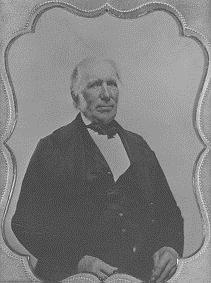
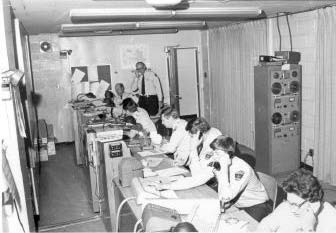
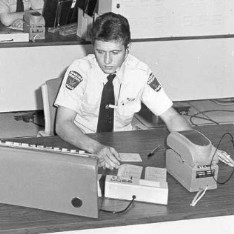
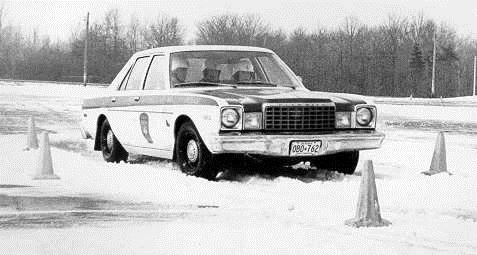

 Subscribe to this Page
Subscribe to this Page